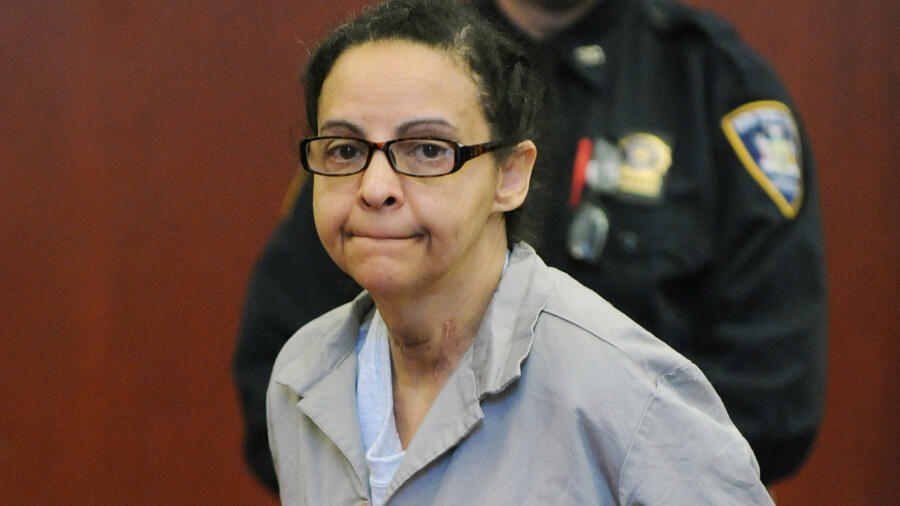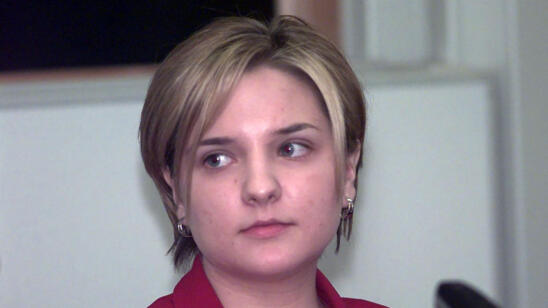Marina Krim knew something was wrong when the babysitter didn’t answer her text messages. But it was only after she entered her Manhattan apartment on October 25, 2012 that she realized she was living her worst nightmare: Her two young children—Lula, 6 years old, and Leo, 2— were laying in the bathtub, their throats slit. They were pronounced dead on the way to the hospital.
On the other side of the knife: babysitter Yoselyn Ortega, who had been enraged with Krim over terms of payment. Still in the apartment when Ms. Krim discovered the brutal double-murder, Ortega turned the knife on herself, but ultimately survived her suicide attempt. In May, she was sentenced to life in prison without parole.
In June, a Nashville, Tennessee man, Christopher Riley, was charged with first-degree murder and aggravated child abuse for allegedly beating to death a toddler he was babysitting. The victim’s mother had left her child with Riley after she was unable to make other childcare arrangements so she could go to work.
A&E True Crime spoke with David Finkelhor, sociology professor at the University of New Hampshire, director of the Crimes Against Children Research Center and author of the book Nursery Crimes, to better understand why some babysitters kill and how parents can prevent their children from falling victim.
What kinds of babysitters end up killing the children they care for?
The most frequent category of abusers of children who aren’t family members are informal caregivers: a mother’s boyfriend, or somebody else who is brought in to handle a child while somebody has to do something. That’s far more frequent than paid caregivers.
What about the way the Ortega murders played out? In the cases of homicides committed by babysitters, is this kind of double-murder typical?
No. Of the kinds of cases that result in the death of a child, the most frequent is almost certainly negligent homicide: where the caregiver is behaving in a reckless way with a young child and the child hits their head or the child is allowed to fall or allowed to get near something. After that, the most common are physical abuse fatalities, which are generally the result of frustration and reaction to some kind of challenge: The child refuses to do something and the caregiver hits the child or throws the child; the child bites the caregiver and the caregiver punches the child.
This case, where there was a clear intent to kill the child and it wasn’t the product of overuse of force, is a very unusual set of conditions.
Do certain types of children fall victim to homicide more often than others?
The main thing that [affects vulnerability] is [that] the same amount of force is much more likely to be fatally injurious to a younger child than an older child. And even in neglect fatalities, the pure helplessness of younger children makes them much more vulnerable to fatal outcomes because they really can’t fend for themselves.
Children are also more vulnerable if they’re disabled, for a couple of reasons: They are oftentimes more burdensome and impose more of a challenge [to the caretaker], tending to provoke an overreaction, but they also have special needs and special vulnerabilities.
What about the perpetrators? Is there a profile? A lot of the high-profile stories about killer babysitters involve female perpetrators, which seems noteworthy given that most murderers are men.
Most caregivers are female, so there’s a disproportionate gender ratio. But the fact is, males, given the amount of time they spend in those roles, are probably more of a risk. And that’s a combination of being stronger, tending to have more aggressive physical reactions to situations and often having less training in the care of children.
Any other factors that might be predictive of homicidal behavior among caregivers?
I don’t know of any demographic features that I could cite here. There might be behavioral features: people who have criminal history or problems with alcohol or substance abuse, people who have mistreated children in the past.
In the story of the Krim murders, Ortega told police she was upset about wages. In cases of child homicide committed by babysitters or nannies, is getting back at a child’s parents a common theme?
That’s a motive you’re much more likely to see, curiously, in parental homicides. Particularly in the course of custody disputes: Where a father says, ‘I’m not going to get custody of the child and therefore you can’t have the child either,’ and so they intentionally kill the child.
Another scenario you sometimes see: The caregiver will go off and abduct the child and disappear, sometimes with the intention of trying to protect the child from a parent they don’t like, and sometimes as a form of retaliation against the employer. But oftentimes, in these circumstances, the caregiver is allied with the child.
This is every parent’s worst nightmare. What’s your advice to parents who want to be proactive about protecting their children?
Check people’s references. Talk to them. The more you can find out about their background and experiences, the better. Maybe do a background check.
They should also be thinking about not just the person they’re hiring but [the babysitter’s] family members as well. Sometimes, if they’re giving someone over to the hired person’s house, the other relatives and family members will have access to the child. But sometimes, even in your own house, those people make an appearance. And they can impose a danger on the child.
But something that needs to be strongly emphasized is that these are rare outcomes. The biggest threats to young children are at the hands of their own parents and members of their family. People always overestimate the danger that other people pose to their kids, and underestimate the risk that they themselves pose.
Related Features:
What Drives Some Women to Kill Their Kids?
Susan Smith and 6 Other Women Who Have Murdered Their Children
Podcaster Marcus Parks on How He Believes Xanax Was Used to Murder Caylee Anthony


